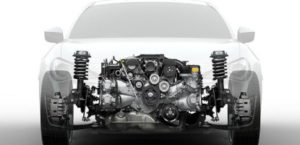The 2.0-liter gasoline turbo engine Audi CDNB 2.0 TFSI was produced from 2008 to 2014 and was installed as a power unit on such mass models as the A4, A5, A6 and Q5. There was a similar motor with a CAEA index under the stringent American ULEV environmental standards.
The EA888 gen2 series includes: CDAA, CDAB, CDHA, CDHB, CCZA, CCZB, CCZC, CCZD, CDNB, CDNC, CAEA, CAEB.
Specifications
| Production years | 2008-2014 |
| Displacement, cc | 1984 |
| Fuel system | direct injection |
| Power output, hp | 180 |
| Torque output, Nm | 320 |
| Cylinder block | cast iron R4 |
| Block head | aluminum 16v |
| Cylinder bore, mm | 82.5 |
| Piston stroke, mm | 92.8 |
| Compression ratio | 9.6 |
| Features | DOHC, AVS |
| Hydraulic lifters | yes |
| Timing drive | chain |
| Phase regulator | on the intake shaft |
| Turbocharging | KKK K03 |
| Recommended engine oil | 5W-30 |
| Engine oil capacity, liter | 4.6 |
| Fuel type | petrol |
| Euro standards | EURO 5 |
| Fuel consumption, L/100 km (for Audi A6 2012) — city — highway — combined |
8.3 5.4 6.5 |
| Engine lifespan, km | ~260 000 |
| Weight, kg | 142 |
The engine was installed on:
- Audi A4 B8 (8K) in 2008 – 2011;
- Audi A5 1 (8T) in 2008 – 2011;
- Audi A6 C7 (4G) in 2011 – 2014;
- Audi Q5 1 (8R) in 2009 – 2014.
Disadvantages of the Audi CDNB engine
- Most of the owners’ complaints about this engine relate to high oil consumption.
- The most popular solution to this problem is to replace the pistons.
- Carbon deposits form from oil fumes, so decarbonization is periodically needed here.
- The timing chain has a limited resource and can stretch up to 100,000 km.
- Also, ignition coils, a water pump with a thermostat, high pressure fuel pump do not serve here for long.







am chasing the correct Dip stick for CDNB Motor… Please advise